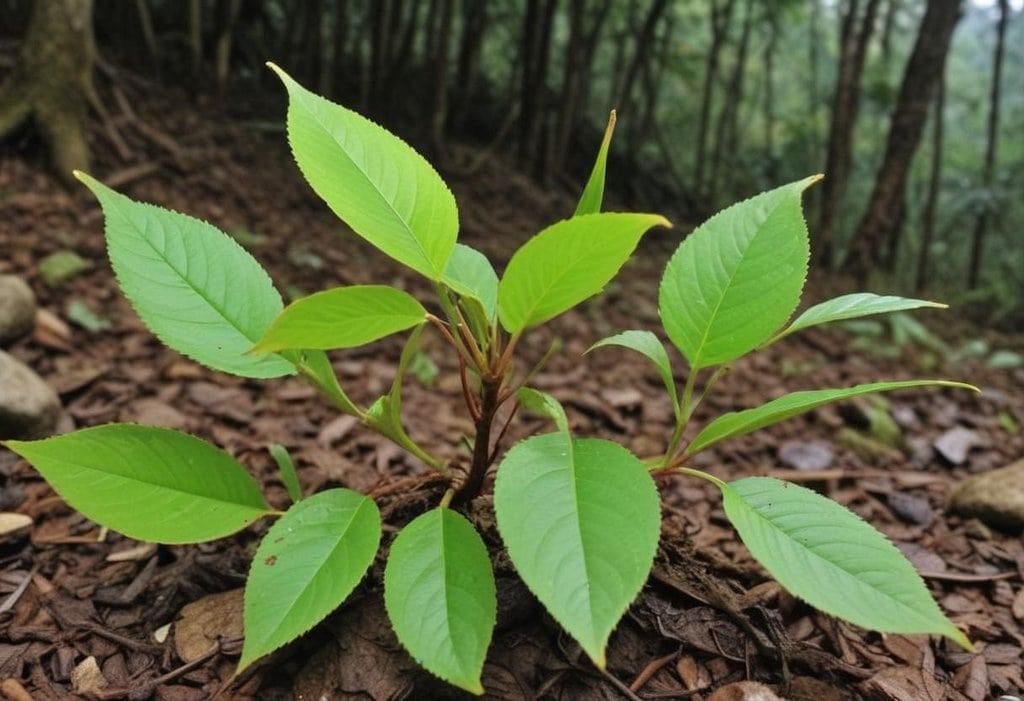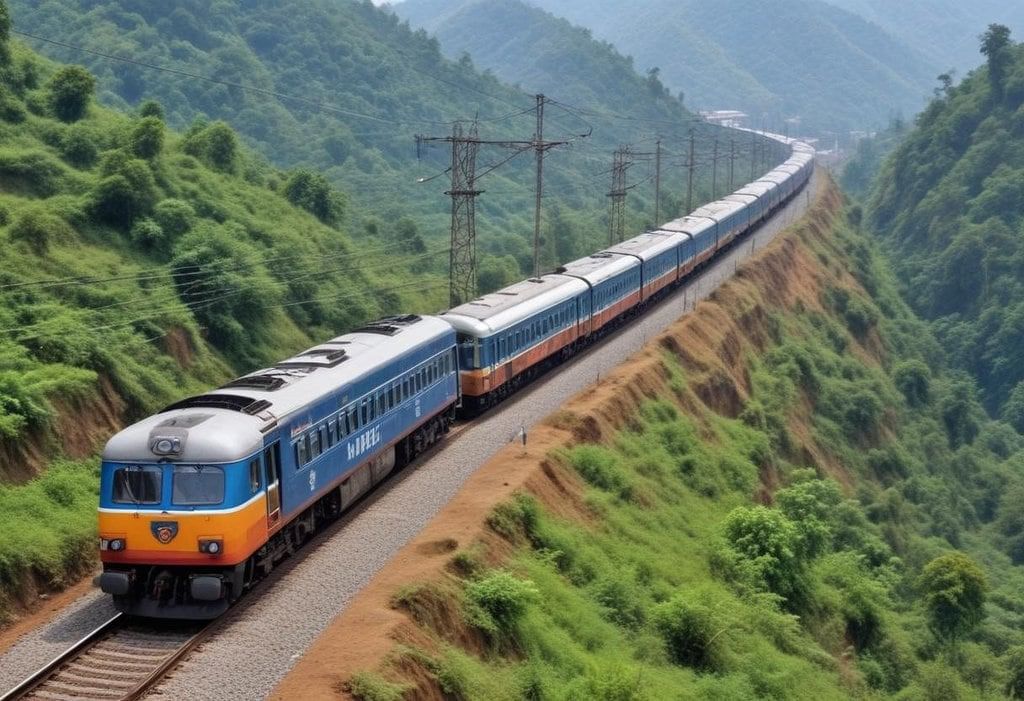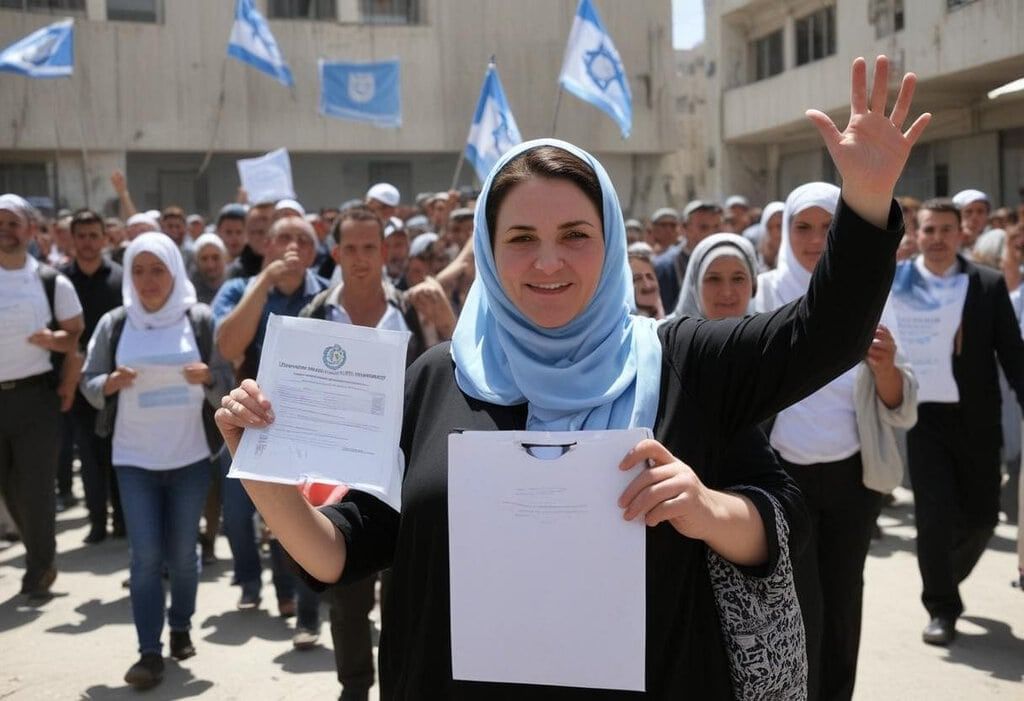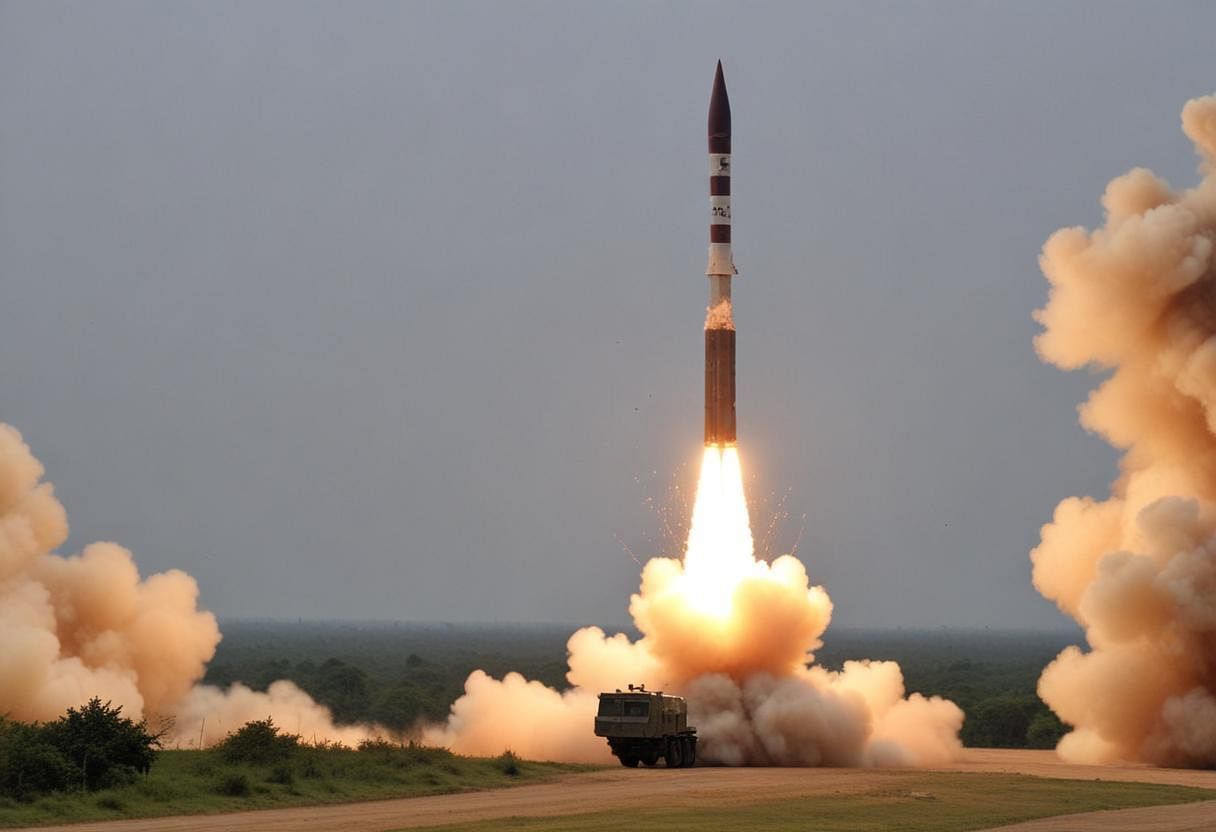Weekly Current Affairs (22nd to 31st July 2024) | General Test Preparation for CUET UG - CUET Commerce PDF Download
New Plant Species Discovered in Arunachal Pradesh Sanctuary
 Researchers from the Botanical Survey of India (BSI) found a new plant species, Phlogacanthus sudhansusekharii, at the Itanagar Wildlife Sanctuary in Arunachal Pradesh.
Researchers from the Botanical Survey of India (BSI) found a new plant species, Phlogacanthus sudhansusekharii, at the Itanagar Wildlife Sanctuary in Arunachal Pradesh.
Species Overview:
- The newly discovered plant belongs to the Acanthaceae family and the Phlogacanthus genus, known for 13 species found mainly in the northeastern and eastern Himalayas.
- It was named after Dr. Sudhansu Sekhar Dash, a scientist at BSI, for his notable work in plant and ecological studies in the Indian Himalayan region.
Research Findings:
- The research, by Samrat Goswami and Rohan Maity, published in the Indian Journal of Forestry, revealed that the new species is closely linked to Phlogacanthus guttatus but differs in distinct physical traits.
Significance of Discovery:
- Chief Minister Pema Khandu highlighted the importance of preserving Arunachal Pradesh's natural resources for future generations, acknowledging the biodiversity showcased by this finding.
About Phlogacanthus sudhansusekharii:
- Unique to India's Northeast, this plant species with bright purple flowers and distinctive leaves thrives in damp, shaded woodlands.
- Named after Sudhansu Sekhar Das, it plays a vital role in local ecosystems, emphasizing the need for conservation efforts due to habitat loss.
- While its medicinal properties remain understudied, its potential in traditional medicine highlights its value.
Kush Maini Secures First Formula 2 Win in Hungary
- India's Kush Maini achieved a significant milestone by securing his first victory in a Formula 2 Sprint Race at the Hungarian Grand Prix. The triumph occurred after the initial winner was disqualified, enabling Maini to clinch the top position on the podium.
Performance Highlights:
- Accumulating an additional 10 points from his triumph at the Hungaroring, Maini's total stands at 66 points, positioning him eighth in the F2 Drivers Standings, surpassing Mercedes junior driver Kimi Antonelli. Despite a challenging start from ninth on the grid, Maini dropped a place in the opening lap. However, he maintained composure and effectively maneuvered the race, reclaiming second place by the 17th lap.
Defensive Strategies:
- During the concluding laps, Maini exhibited adept defensive driving skills, evading challenges from fellow drivers and exerting pressure on Richard Verschoor, who had already been disqualified as the race leader. Maini's current Formula 2 season, marked by five podium finishes and this particular victory, underscores his significant progress in the sport. Overall, Maini commends his team for their unwavering support and diligence, acknowledging their resilience and dedication throughout the season.
About Kush Maini:
- Kush Maini is an up-and-coming Indian racing driver recognized for his achievements across various motorsport disciplines. Born on September 22, 2000, he originates from a family with a rich racing heritage, including his elder sibling, Arjun Maini, who also competes professionally in motorsport. Engaging in numerous formula racing championships, such as the FIA Formula 3 Championship and the Formula Renault Eurocup, Kush's performances in these series have highlighted his driving prowess and potential for higher-level competitions. Over time, Kush Maini has garnered acclaim for his consistent displays and resolute mindset. His trajectory in the racing realm continues to captivate motorsport enthusiasts and experts, positioning him as a promising talent within the racing community.
Mizoram’s Aizawl Became the Fourth Capital in Northeast India to gain Railway Connectivity

- The city of Aizawl in Mizoram will be the fourth capital in Northeast India to have train service by July 2025.
- Guwahati, Agartala, and Naharlagun are all connected to the railway network.
Project Overview
- Bairabi-Sairang railway project goes from Bairabi in Assam to Sairang in Mizoram’s Aizawl District and is 52 km long.
- This project started in 2008-2009 and cost about Rs 8,213.72 crore.
Progress and Infrastructure
- So far, 93% of the project’s actual work is done.
- The railway line has four stops: Hortoki, Kawnpui, Mualkhang, and Sairang.
Challenges Faced
- There are problems with building the railway, like rough terrain, heavy monsoons, and needing easy access to building supplies and skilled workers.
Benefits of Connectivity
- Once it’s up and running, the railway link will cut travel time between Aizawl and Assam by a large amount.
- This will help locals by lowering the prices of moving people and goods.
About Aizawl
- The Indian state of Mizoram’s main city, Aizawl, is 1,132 meters above sea level in the Himalayas.
- Aizawl became a town in the year 1890.
Israel Approves Bill Declaring UNRWA a Terrorist Organization

- The Israeli parliament (Knesset) showed initial approval for a contentious bill on July 22, 2024. The bill aimed to label UNRWA as a terrorist organization due to allegations of collaboration with Hamas. This decision marks a significant escalation in Israel's efforts against the UN agency.
Details of the Bill
- Following the first reading, the proposed law will undergo further review by the foreign affairs and defense committees.
- The bill's proponent, Yulia Malinovsky, referred to UNRWA as a "fifth column within Israel," highlighting long-standing tensions between the organization and Israeli authorities.
Role of UNRWA
- UNRWA is responsible for providing essential services such as education, healthcare, and humanitarian aid to millions of Palestinians in Gaza, the West Bank, and neighboring regions.
- Historically, UNRWA has had strained relations with Israel, which have worsened since conflicts in Gaza.
Allegations Against UNRWA
- Israeli officials claim that numerous UNRWA employees have ties to terrorist organizations, notably Hamas and Islamic Jihad. However, concrete evidence supporting these allegations has not been presented to an independent U.N. investigation.
International Response
- Following Israel's accusations, some donor nations suspended financial aid to UNRWA, although several have resumed contributions, with Britain recently committing to renewed support.
- The Israeli bill faced criticism from both Hamas and the Palestinian Authority, prompting calls from Palestinian officials for global opposition to any attempts at dismantling the UN entity.
About United Nations Relief and Works Agency (UNRWA)
- Establishment and Operations Scope: Founded in 1949 to assist Palestinian refugees, UNRWA operates across five regions, serving over 5 million registered refugees with education, healthcare, and social services, prioritizing human rights and sustainable development.
- Funding and Support: Reliant on voluntary donations primarily from UN member states, UNRWA faces financial instability that impacts its ability to consistently deliver services, necessitating ongoing backing from the global community.
Budget 2024: Defence Ministry Receives ₹6.22 Lakh Crore Budget Allocation
- The government has set aside ₹6.22 trillion for the defense ministry, with a main focus on buying new equipment totaling ₹1.72 trillion, making it the largest budget allocation for defense in recent times.
- The capital outlay is meant to enhance the armed forces' capabilities by acquiring advanced weapon systems like fighter jets, ships, submarines, drones, and specialized vehicles.
Specific Plans for Procurement
- Aircraft Modernization: Upgrades for the Su 30MKI fleet and acquiring more LCA Mk1A and C-295 transport aircraft.
- Naval Expansion: Contracts expected for three new submarines from Mazagon Dockyards Ltd and 26 Rafale Marines from France.
- Drone Acquisition: Long-range drones from the United States.
Flagship Initiatives and Innovations
- Agnipath Scheme: Increased funding from ₹4,266 crore to ₹5,979 crore to attract and retain armed forces personnel.
- Innovative Defense Projects: The ADITI scheme has been allocated ₹400 crore to support innovative technology development, covering 50% of specific project budgets.
Infrastructure Development
- The Border Roads Organization (BRO) received a 30% budget increase to enhance border infrastructure, with projects including:
- Development of Nyoma airfield (Ladakh)
- Shinku La tunnel (Himachal Pradesh)
- Nechiphu tunnel (Arunachal Pradesh)
This extensive budget demonstrates a strategic emphasis on modernizing defense capabilities and improving national security infrastructure.
More About the Defense Budget
Many countries allocate a significant portion of their budgets to the military. For example, the United States spends over three percent of its gross domestic product on defense, while numerous NATO countries aim for two percent. Eastern European nations have notably increased their military budgets due to geopolitical tensions in the region. Despite restrictions on military spending in Japan's constitution, the country remains one of the top spenders in Asia. Moreover, some countries fund their defense budgets through unconventional means, such as exporting weapons or selling military equipment to other nations.
DRDO Successfully Tests Phase-II Ballistic Missile Defence System

- Phase-II Ballistic Missile Defense (BMD) System Test:
On July 24, 2024, the Defense Research and Development Organization (DRDO) successfully tested the Phase-II BMD system. This test demonstrated India's progress in defending against ballistic missiles with ranges of up to 5,000 kilometers, a significant advancement from Phase-I.
- Phases of the BMD System:
- Phase I: Operational and effective, capable of intercepting missiles up to 2,000 km away.
- Phase II: Recently tested, enhancing interception capabilities for targets up to 5,000 km away.
- Test Procedure:
During the test, a target missile was launched to simulate a threat. Land and sea radars detected the missile, activating the Air Defence (AD) system. The Phase-II AD missile from Chandipur intercepted the target successfully.
- Technology and Capabilities:
- Utilizes advanced technologies like long-range sensors and low-latency communication systems.
- Includes a Mission Control Centre and advanced interceptor missiles to enhance national security.
- Missile Specifications:
The AD endo-atmospheric missile is a two-stage, solid-fueled system designed for ground launch. It targets threats in various atmospheric regions, supporting India's defense strategy.
- About DRDO:
DRDO, established in 1958, has developed numerous defense technologies like the Agni and Prithvi missiles. They are also involved in projects related to combat aircraft, healthcare equipment, and advanced military technologies.
Rashtrapati Bhavan’s Durbar Hall and Ashok Hall, now renamed
- President Droupadi Murmu altered the names of Rashtrapati Bhavan's halls on July 25, 2024. "Durbar Hall" was renamed to "Ganatantra Mandap" and "Ashok Hall" to "Ashok Mandap." This change aligns with a strategy to showcase Indian cultural values and underline India's significance as a Republic.
Importance of the Renaming:
- The term "Durbar" historically referred to the courts of Indian rulers under British rule. It fell out of use after India gained independence. The new names highlight the shift from a colonial to a republican identity, stressing Indian heritage.
Rashtrapati Bhavan History:
- Rashtrapati Bhavan, constructed between 1912 and 1929 in the British Raj era, now serves as the official residence of the Indian President. It exemplifies a blend of British and Indian architectural styles, with notable contributions from Edwin Lutyens.
Durbar Hall Overview:
- Durbar Hall hosted significant state events such as Civil and Defence Investiture Ceremonies and pivotal swearing-in ceremonies like India's first government inauguration in 1947. The hall's grandeur, marked by lofty marble walls and intricate chandeliers, underscores its importance for Indian state functions. Mughal influences are evident in its design, featuring marble lattices and ornate columns as decorative elements. While retaining remnants of its colonial past, the hall has been adapted to suit the requirements of the modern Indian Republic, incorporating symbols reflective of the nation.
Ashok Hall Overview:
- Previously a ballroom, Ashok Hall is where foreign dignitaries are formally introduced, and the national anthem is played during significant events. Its design blends Indian and Western styles, adorned with striking chandeliers and vibrant artwork. The art within Ashok Hall depicts historical narratives, showcasing Persian influences in its decorative motifs and fireplace inscriptions. This exemplifies how Rashtrapati Bhavan's architecture amalgamates diverse cultural elements.
ISRO Seeks ESA Collaboration for Apophis Asteroid Mission

- The Indian Space Research Organization (ISRO) and the European Space Agency (ESA) are teaming up for the Ramses project. They aim to study the asteroid Apophis, which will pass near Earth in 2029. This collaboration demonstrates global cooperation in exploring objects near our planet.
Objective of the Ramses Mission
- A significant event is approaching as the 375-meter asteroid Apophis will come within 32,000 km of Earth. This presents a unique opportunity for scientists to expand their knowledge of space. The primary aim of the Ramses mission is to closely monitor the asteroid to enhance our understanding of potential threats to Earth.
ISRO's Participation
- Somanath, the head of ISRO, expressed the organization's interest in engaging with the asteroid during its flyby. While specific plans remain undisclosed, discussions with ESA are ongoing to leverage the expertise of both entities. Asteroids are remnants of the Solar System's formation and have historically been overlooked. However, there is a growing realization of their potential hazards to Earth, reminiscent of the extinction event that wiped out the dinosaurs due to asteroid impacts.
IS4OM Initiatives and Future Goals
- Under the IS4OM initiative, ISRO has initiated preliminary efforts to observe asteroids and intends to establish dedicated telescopes for monitoring purposes. Collaboration with international bodies like IAWN and SMPAG will enhance asteroid risk assessment and planetary protection measures. ISRO envisions future partnerships with major space agencies such as NASA and JAXA to strengthen global endeavors in asteroid research and planetary defense, thereby bolstering safety protocols on both national and international scales.
About ISRO
- Historical Milestones: Established in 1969, ISRO achieved a significant milestone with the launch of its first satellite, Aryabhata, in 1975. This marked the commencement of India's space exploration journey, leading to notable achievements like the Mars Orbiter Mission (Mangalyaan) in 2014, which established ISRO as the first Asian space agency to reach Mars.
- Innovative Achievements: ISRO's Polar Satellite Launch Vehicle (PSLV) is renowned for its cost-effectiveness, notably demonstrated by launching 104 satellites in a single mission in 2017. The Chandrayaan-2 mission made a groundbreaking discovery of water ice on the Moon, contributing valuable insights to lunar science.
India’s First Sunken Museum to Open at Humayun Tomb
- India's first sunken museum, situated at the Humayun Tomb complex in Delhi, is set to have its grand opening on July 29, 2024, welcoming visitors from July 30 onwards. This event coincides with the 46th UNESCO World Heritage Committee session, to be graced by Union Culture and Tourism Minister Gajendra Singh Shekhawat and Prince Rahim Aga Khan.
- Importance of Humayun's Tomb
Humayun's Tomb, a UNESCO World Heritage Site, is famous for its architectural and historical significance. Built in the 16th century, it showcases the essence of Mughal heritage and stands as a vital cultural landmark in Delhi, reflecting the grandeur and intricate design of Mughal architecture. - Museum Design Inspiration
The new sunken museum at the Humayun Tomb complex is inspired by traditional Indian 'baolis' (stepwells or water tanks), blending historical elements with modern exhibition techniques. This design not only enhances the museum's visual appeal but also connects visitors with historical architectural styles. - Exhibits and Artifacts
The museum showcases a range of historical artifacts including the restoration of Humayun's Tomb post storm damage in 2014, along with rare items like 'farmans' (decrees), an astrolabe, a celestial sphere, and a warrior's helmet from the 16th or 17th century. - Technological Integration
The museum incorporates cutting-edge technology to enhance visitors' experiences. It offers 3-D videos depicting historical scenes and detailed scale models of the nearby Nizamuddin Dargah complex from the 14th century, aiding in understanding the site's long history and significance. - About Humayun Tomb
Historical Significance and Design
Humayun's Tomb, a UNESCO World Heritage Site, was built between 1569-70 by Empress Bega Begum, showcasing Persian architectural influences and setting a precedent for future Mughal architecture. - Architectural Features
The tomb complex boasts over 100 other tombs and a charbagh garden, its design with a central dome and symmetrical layout later inspiring the construction of the Taj Mahal. - Restoration and Decoration
In the 20th century, the tomb underwent restoration supported by the Aga Khan Trust. Constructed with red sandstone and adorned with intricate geometric patterns and calligraphy, the tomb showcases its artistic and architectural significance.
WHO Launches Project to Develop H5N1 Vaccines Using mRNA
On July 29, 2024, the World Health Organization (WHO) started a new plan to hasten the creation of vaccines for bird flu in less wealthy nations. They will utilize messenger RNA (mRNA) technology. Sinergium Biotech, an organization from Argentina, is taking the lead by forming potential H5N1 bird flu vaccines.
- H5N1 Background: The H5N1 type of bird flu was found first in 1996 and has spread among bird populations worldwide. Since 2020, there have been more outbreaks, with the virus also infecting mammals, causing concerns about a possible human pandemic.
- Role of mRNA Technology: This project involves using mRNA technology, which instructs the body to create proteins that initiate an immune response. The WHO will collaborate with Sinergium Biotech to demonstrate the effectiveness of the technology through initial studies. Subsequently, they will share knowledge and resources with vaccine producers in less affluent countries.
- Aiming for Vaccine Equity: This initiative expands on the WHO's mRNA Technology Transfer Programme, initiated during the COVID-19 outbreak to tackle vaccine shortages globally. The program involves 15 manufacturing partners in various countries, ensuring broader access to vaccine production for all.
- Preparing for Future Pandemics: The WHO mentioned that traditional flu vaccines could be adjusted to combat H5N1 if it spreads among humans. However, mRNA vaccines are preferred due to their adaptability. Manufacturers can swiftly switch to producing different vaccines as required, promoting a sustainable method for vaccine and treatment production. The WHO's goal is to enhance vaccine production in regions with lower incomes, ensuring global readiness for future pandemics, especially considering the ongoing threat of bird flu viruses.
About WHO:
- Foundation and Location: The World Health Organization (WHO) was established in 1948 and is headquartered in Geneva, Switzerland, with 194 member countries.
- Official Languages and Health Standards: The WHO operates in six languages: English, French, Spanish, Russian, Chinese, and Arabic. It introduced the International Classification of Diseases (ICD) to standardize health data globally.
- Pandemic Response and Funding: The WHO plays a crucial role in combating pandemics such as HIV/AIDS, malaria, and COVID-19. Its Global Health Observatory supplies essential health data, relying primarily on voluntary contributions for funding.
Uttar Pradesh Prohibition of Unlawful Conversion of Religion Act, 2021 – Recent Updates

Changes to the Prohibition of Unlawful Conversion of Religion Act
- Background: The law in Uttar Pradesh, created in 2021, aimed to stop forced religious conversions but faced criticism for not being clear or protective enough.
- Reasons for Change: The government felt the law did not adequately safeguard minors, women, or those from Scheduled Castes and Scheduled Tribes, especially in light of numerous illegal conversions in these groups.
Key Amendments Proposed:
- Expanded FIR Filing: Previously, only an "aggrieved person" could report illegal conversion. Now, "any person" can file a report, simplifying the reporting process.
- Stricter Bail Conditions: The updated bill makes it tougher for accused individuals to secure bail, requiring them to prove innocence and pledge to avoid further offenses while on bail.
- Enhanced Penalties: Penalties for illegal conversion will be more severe, with longer jail terms and increased fines, particularly for crimes involving vulnerable groups like minors or individuals with disabilities. Harsher penalties are also introduced for grave violations, such as financial transactions with foreign entities linked to illegal conversion.
- Implications of the Amendment: If passed, the bill could influence similar laws in BJP-ruled states and face legal challenges from NGOs and legal experts opposing such legislation. Approval of the amendment may set a precedent for other regions, triggering further debates on anti-conversion statutes in India and potentially leading to more legal disputes in the Supreme Court concerning the constitutionality and implementation of these alterations.
|
164 videos|798 docs|1153 tests
|





















